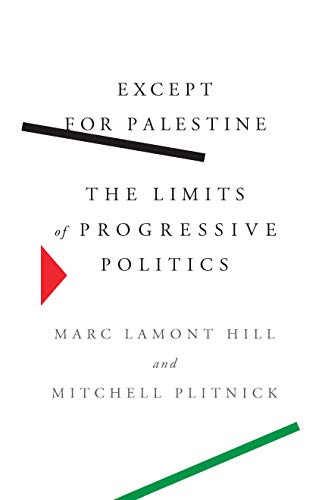The Class Politics of Law: Essays Inspired by Harry Glasbeek, Eric Tucker & Judy Fudge (Eds.), Fernwood Publishing, 2019, pp. 255, ISBN: 9-781773-631004
In The Politics of the Judiciary, by now a classic, Welsh legal scholar J.A.G Griffith outlines his exasperation at the apparent inability of legal scholars to question the judiciary’s alleged neutrality. Indeed, the law is often lauded as the ultimate paragon of virtue and indifference to particular characteristics of those before it. At its altar, all are apparently equal. So when the deafening cries of the need to establish the rule of law or worse still to follow it are heard, the effect is to depoliticize its substantive content and conceal its social function.
One legal scholar who refused to conform to the pressures of his profession, which provided a standard template of legal scholarship, was Harry Glasbeek. A Jewish boy who hid in France during World War II then emigrated to Australia, worked at Monash and Melbourne University before moving to Canada, where he took up a post at Osgoode Law School in Toronto. He made significant contributions to the critique of labour law, the law of torts, and criminal law. His critique rested on his analysis of the way law functions to advance the interests of capitalism, further entrenching inequality and injustice in society while protecting the capitalist class. He sought to expose ways the law shields and conceals capitalism. Unlike J.A.G Griffith’s critique, he focused on both internal consistency and external effects of the doctrine derived by judges.
In their edited book The Class Politics of Law, Erick Tucker and Judy Fudge bring together a group of Canadian and English legal scholars working in Glasbeek’s tradition. The essays seek to develop Glasbeek’s critique by analyzing his approach to law and expounding on different aspects of his writing and applying it to different spheres of social life.
Julian Sempill’s contribution discusses the impetus behind Glasbeek’s scholarship and his distinctive way of presenting it. Given that legal writing tends to obscure more than it reveals by its doctrinaire way of enumerating sections, paragraphs and referencing cases which often go unexplained, the scholarship tends to be self-contained and aimed at fellow academicians instead of a wider audience. This privileged status enjoyed by academic lawyers is thus perpetuated. Sempill shows how Glasbeek broke away from this tradition by way of a socialist vernacular, a blend of theoretical insight aimed at providing activists with tools to advance their struggle. Rather than couching the analysis in socialist and legal terminology with obligatory references to Marxist greats, Glasbeek made his scholarship accessible.
That scholarship largely rested on his structural critique of capitalism and capitalist society. He rejected the individualized fault-based system the common law propagates and advocated that the final impact, action or event, is a product of a particular socio-economic setup of modern societies. In an unequal society, where one class dominates another, Glasbeek showed how the law treated capital differently from ordinary citizens. This resulted in the law condoning hazardous practices for workers and normalizing, tolerating or enforcing social relations detrimental to one class while beneficial to another. Keith Erwing’s chapter on Glasbeek’s approach to industrial relations shows how the prevailing labour model fashioned after the Wagner Act limits the power of the workers in an enterprise-based model of collective bargaining. By bureaucratizing worker organizing and placing limits on their effectiveness, the Wagner Act serves the prevailing economic orthodoxy. Glasbeek showed that even legislation that’s aimed at protecting the workers does little to advance their rights and is, in effect, used to subordinate and control them.
The focus of Glasbeek’s critique was on capitalist structures as exemplified by the wage relation, which lies at the base of the pursuit of profit. Interestingly, the editors included essays which more firmly fall in the social reform camp. Namely, Neil Brooks’ essay on high-end inequality states that inequality is not an inevitable product of technology and globalization, but a result of political decisions with enormous moral consequences. In fairness, Brooks acknowledges that Glasbeek would likely disagree with his precept that a more just redistributive system would be necessary. Rightly so, for by denying the inherent tendency of capital to roam the world for ever-cheaper labour and placing the onus on politicians, we miss the target and merely advocate for a different rate of exploitation. Global free trade agreements that facilitate capital mobility while restricting the mobility of workers result in gross global inequality and exploitation while ensuring that wealth accrues at the top.
Similarly, Katherine Lippel’s discussion of regulation to prevent occupational violence suffers from mistaking the effect for a cause. She maintains that workplace violence affects workers’ mental health and that management practices rely on harassment and bullying to increase productivity. If the management is free to practice their own styles of management, then there could be no legal consequences to their actions and the workers would be forced to suffer silently. While better occupational health and safety standards and enforcement would surely benefit workers to a degree, the framework that would continue to guide the legislation would still remain that of capitalist relations. Lippel’s article suffers from viewing labour contracts as a dualist choice between precarity and a standard contract with a supposed “safety net.” Both views are logocentric as they are structured around the needs of capital, that is, to extract value from labour and, as such, continue to perpetuate inequality and injustice. Instead of focusing industrial relations on the needs of capital, we must move to worker-centred organizing.
Furthermore, capital mobility ensures that should the conditions conducive to making profit change, capital could simply relocate. In a neoliberal economy that rests on private ownership and the government’s reluctance to establish publicly owned enterprises, or let alone worker-managed ones, this ensures that capital would always be in a privileged position to legislate. As Harry Glasbeek stated, capitalist actions should be seen as wrongdoings even when there has been no violation of any specific law.
However, despite the law’s inherently conservative bent, it should not be abandoned as a potential site of struggle. Bryan Palmer’s essay reminds us that the law as the terrain of struggle is temporal and specific to the context in which it develops and the manner in which it is deployed. In all cases, its instrumental use as a means of class subordination should be revealed, and then deployed counter-hegemonically, but it will always be limited to providing a defence. Even in Palmer’s discussion on the Smith Act, which sought to criminalize and prosecute American Trotskyites, the successful defence consisted of the Supreme Court’s declaring the Act unconstitutional. While this allowed the Trotskyites to act in unionized workspaces, their actions remain constrained nonetheless.
The working class is circumscribed by law. Legal scholars such as Harry Glasbeek have revealed the law’s function and how it relates to capitalism. He has provided the workers with the material they need to realize how the law structures their workplace and their relations to their employers. Now, it is up to the workers to use this information to agitate for a more equal and just world.




